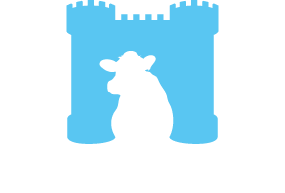DCAB FAQs |
|
Are the products ‘full DCAB’?
‘Full DCAB’ traditionally means that cows are acidified down to a urine pH of 5.5-6.5. At this degree of acidification it is probably necessary to add extra calcium to the diet and monitor urine pHs regularly. Also, full DCAB diets can depress intakes if acidification is taken too far.
Barbican Red works best at a pH of 6.5-7 and the addition of extra calcium is not recommended.
What is better for milk fever prevention - DCAB based or Ca binding?
In the vast majority of herds, restricting high K forages and providing some metabolic acidification is the the most cost effective means of controlling hypocalcaemia. Occasionally, when it is difficult to control background K levels, Ca binding products are an effective alternative. We recommend a DCAB based approach first as it is normally effective and very considerably cheaper than Ca binding products.
What urine pH works best?
Our trial work suggests that a urine pH of approximately 6.5-7 works best to get the highest blood Ca levels after calving.
When urine pH testing there will be a range across a group that can be as much as one pH unit. It is not necessary to monitor frequently if the ration does not change.
We tend to set a ration up, test the urine pH to see if it is correct and then leave it alone unless there is a ration change or problems crop up.
‘Full DCAB’ traditionally means that cows are acidified down to a urine pH of 5.5-6.5. At this degree of acidification it is probably necessary to add extra calcium to the diet and monitor urine pHs regularly. Also, full DCAB diets can depress intakes if acidification is taken too far.
Barbican Red works best at a pH of 6.5-7 and the addition of extra calcium is not recommended.
What is better for milk fever prevention - DCAB based or Ca binding?
In the vast majority of herds, restricting high K forages and providing some metabolic acidification is the the most cost effective means of controlling hypocalcaemia. Occasionally, when it is difficult to control background K levels, Ca binding products are an effective alternative. We recommend a DCAB based approach first as it is normally effective and very considerably cheaper than Ca binding products.
What urine pH works best?
Our trial work suggests that a urine pH of approximately 6.5-7 works best to get the highest blood Ca levels after calving.
When urine pH testing there will be a range across a group that can be as much as one pH unit. It is not necessary to monitor frequently if the ration does not change.
We tend to set a ration up, test the urine pH to see if it is correct and then leave it alone unless there is a ration change or problems crop up.
